As a homeowner, you might have noticed water in your water heater pan and wondered what could be causing this issue.
A water heater pan, also known as a drain pan, is a vital component located beneath your water heater. Its primary purpose is to catch any water leakage from the water heater, preventing damage to your property and alerting you to potential issues.
In this article, we will explore the common causes of water in the water heater pan and provide you with valuable insights into diagnosing and resolving the problem.
Signs of Water in the Water Heater Pan
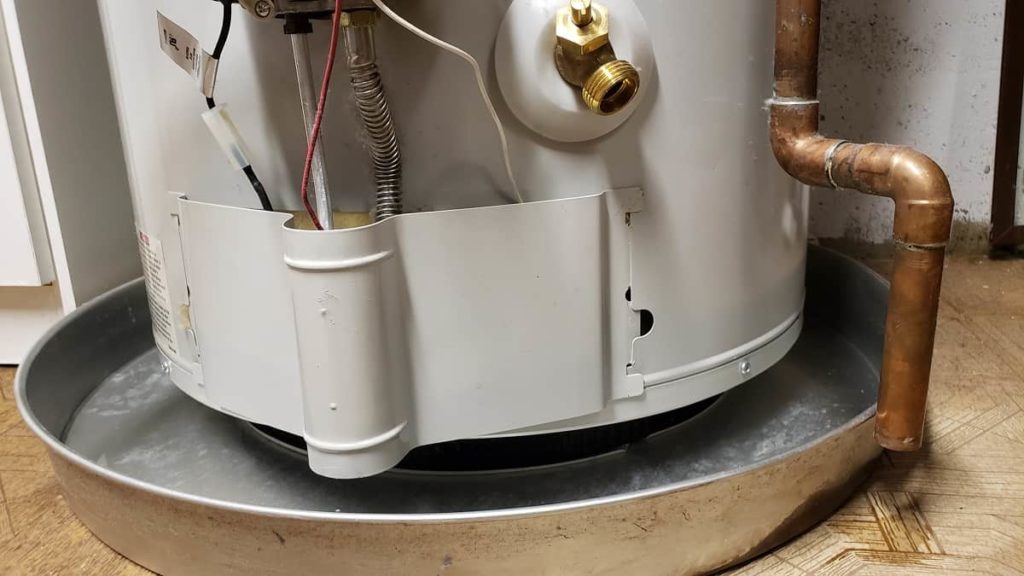
Before going into the possible causes, let us first recognize the signs of water in your water heater pan. Keep an eye out for the following indications:
- Dampness or Puddles: If you notice dampness or standing water around the base of your water heater, it’s likely that the pan has collected water.
- Rust or Corrosion: Water accumulation can lead to rust or corrosion on the exterior of the water heater or the pan itself.
- Visible Leaks: Sometimes, you may spot water dripping directly from the water heater into the pan.
Steps to Diagnose the Problem
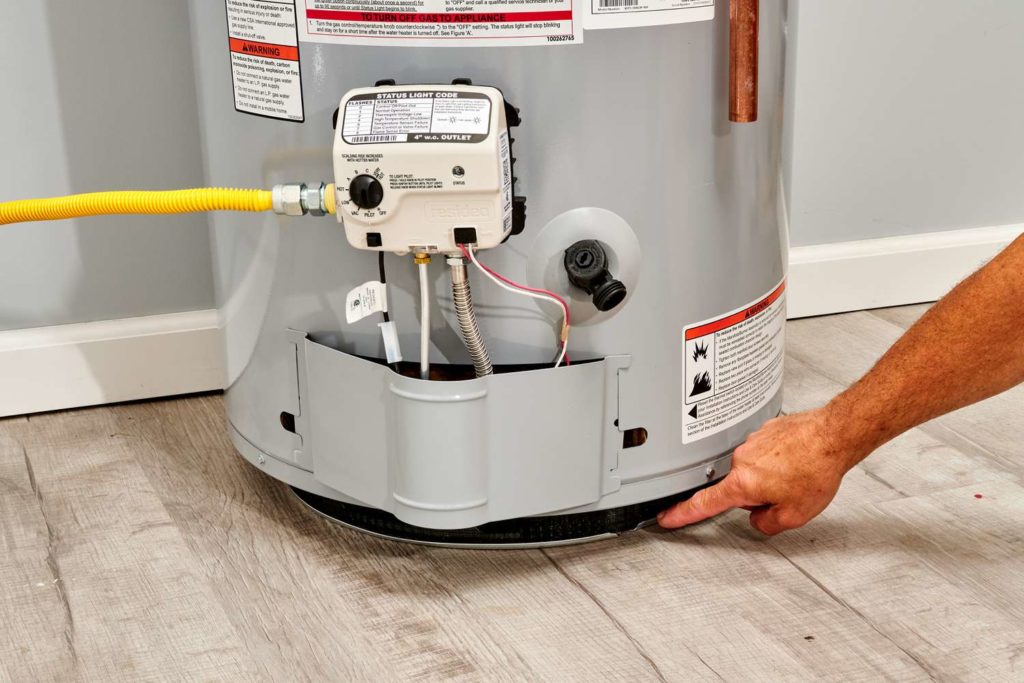
Before taking corrective measures, try to diagnose the root cause of the water in the pan. Here’s a step-by-step approach:
- Check the TPR Valve: Inspect the TPR valve for proper functioning. Make sure it opens and closes smoothly and doesn’t leak water when in the closed position.
If it fails to operate correctly, it may need maintenance or replacement.
- Inspect the Water Heater Tank: Examine the water heater tank for signs of leaks, rust, or corrosion. Use a flashlight to check the tank thoroughly, paying close attention to the bottom and seams.
If you find any issues, it’s crucial to address them promptly.
- Assess Condensation Levels: To assess condensation levels, begin by turning off the water heater and allowing it to cool down for safety purposes.
Next, use a dry cloth to wipe down the water heater tank and the surrounding area, removing any visible moisture or water droplets. After wiping, observe the water heater for a few minutes.
If new water droplets form on the tank’s surface or water begins to pool in the pan shortly after wiping, it indicates the presence of excessive condensation.
- Examine Plumbing Connections: Verify all plumbing connections around the water heater to identify and fix any leaks. Tighten any loose connections or call a professional plumber to address the issue.
Common Causes of Water in the Water Heater Pan and How to Fix Them
Understanding the reasons behind water in the water heater pan is important in determining the appropriate course of action. Here are some common factors that could lead to this issue:
Temperature and Pressure Relief Valve (TPR Valve) Issues
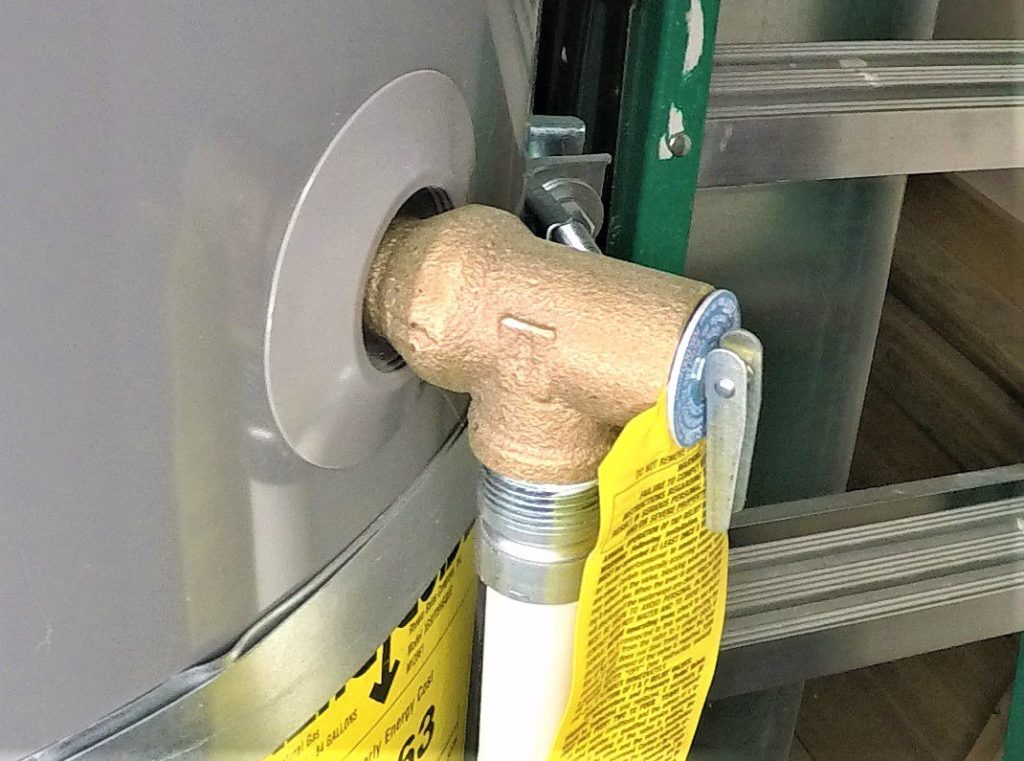
The temperature and pressure relief valve (TPR valve) is an essential safety feature installed on water heaters to prevent tank explosions.
Its purpose is to release excess pressure that builds up inside the water heater when the temperature or pressure exceeds safe levels.
If the TPR valve malfunctions or gets stuck in the open position, it can allow water to escape through the valve and collect in the pan. This could be due to a faulty valve, sediment buildup within the valve, or mineral deposits that hinder its proper operation.
A malfunctioning TPR valve must be addressed promptly to ensure the safety of the water heater and prevent further water leakage.
How to Fix a Faulty TPR Valve
If the TPR valve is faulty, malfunctioning, or leaking, have it addressed promptly by a professional plumber.
If it is beyond repair or is no longer functioning correctly, the plumber may recommend replacing it with a new, reliable valve to ensure the safe operation of your water heater.
Leaking Water Heater Tank
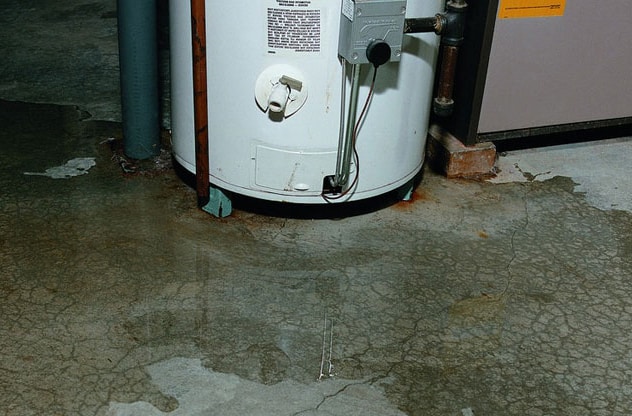
A leaking water heater tank is one of the most common causes of water in the water heater pan. Over time, water heater tanks can deteriorate due to corrosion caused by mineral deposits, especially in areas with hard water.
The constant heating and cooling cycles can exacerbate the issue, leading to cracks or holes in the tank. Sediment buildup at the bottom of the tank can also contribute to tank corrosion.
When the tank develops leaks, water escapes and collects in the pan. A leaking water heater tank is a serious problem that requires immediate attention.
If left unaddressed, it can cause extensive water damage to your property and result in the need for a new water heater.
How to Fix Leaking Water Heater Tank
Address any leaks found in the water heater tank as soon as possible. The severity of the leak and the age of the water heater will influence the appropriate course of action.
For minor leaks, patching the hole with appropriate materials may suffice. However, if the tank is old, extensively corroded, or has multiple leaks, it might be more practical to replace the entire unit.
Replacing the water heater tank is a more long-term solution that ensures the integrity of the system and minimizes the risk of future leaks and water accumulation in the pan.
Excessive Condensation
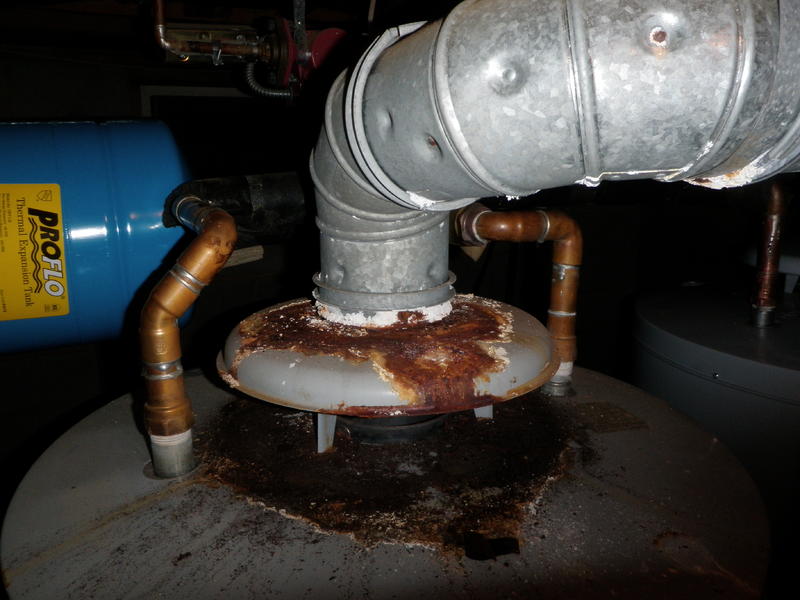
In humid environments or areas with drastic temperature fluctuations, water heaters are prone to condensation. When the warm water inside the tank comes into contact with the cold exterior surface of the water heater, moisture can form on the tank’s surface.
Over time, this condensation can accumulate and lead to water drips that find their way into the pan.
While condensation itself may not pose an immediate risk, excessive moisture in the vicinity of the water heater can lead to mold growth and damage to surrounding structures.
How to Reduce Condensation
To minimize condensation on the water heater tank, consider insulating the unit with an insulating blanket or foam wrap.
Proper insulation helps maintain a consistent temperature, preventing drastic temperature fluctuations that contribute to condensation formation.
Additionally, ensure that the area around the water heater is well-ventilated to allow moisture to dissipate.
Proper insulation not only reduces condensation but also improves the overall energy efficiency of the water heater, leading to potential energy savings.
Plumbing Leaks
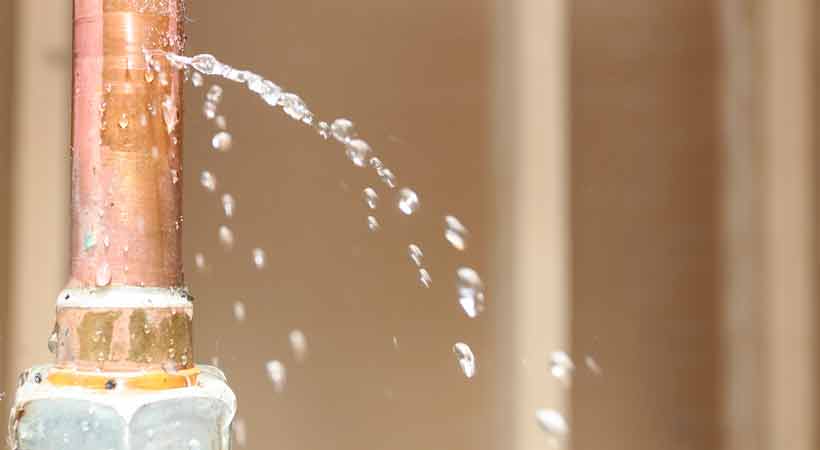
Sometimes, the issue might not be directly related to the water heater itself but rather to plumbing connections or pipes near the water heater. Leaky plumbing connections can cause water to leak onto the floor, which then collects in the water heater pan.
These leaks could be from nearby water supply lines, fittings, or even the pressure relief valve discharge line. Identifying and fixing these plumbing leaks is crucial in preventing water from accumulating in the pan.
How to Fix Plumbing Leaks
If the issue is caused by plumbing connections or pipes near the water heater leaking, it’s crucial to fix these leaks promptly. Loose fittings or damaged plumbing can allow water to escape and collect in the pan.
Tighten any loose connections or replace faulty parts as needed. If you are unsure about handling plumbing repairs, seek the expertise of a qualified plumber to ensure proper and effective solutions.
Potential Risks of Ignoring Water in the Water Heater Pan
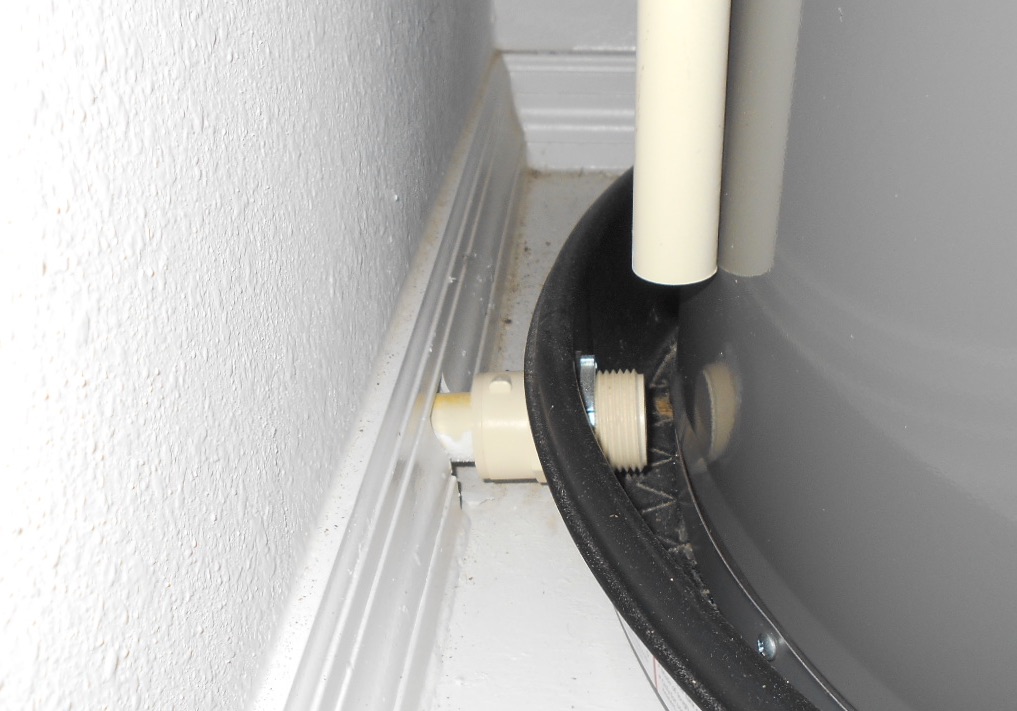
Ignoring water in the water heater pan can have severe consequences for your home and your water heater’s performance. Here are the potential risks associated with neglecting water in the water heater pan:
- Water Damage: The water collected in the pan can seep into surrounding structures, such as walls, flooring, and nearby cabinets. Over time, this water damage can lead to rot, warping, and weakening of building materials.
If left untreated, water can penetrate deeper into the structure, causing even more extensive and costly damage.
Additionally, moisture provides an ideal environment for mold growth, which can compromise indoor air quality and pose health risks to the occupants.
- Structural Issues: Prolonged exposure to water can significantly weaken the structural integrity of your property.
When water continuously drips or leaks onto floors, walls, or other surfaces, it can cause wood to swell, metal to corrode, and concrete to erode.
As a result, floors may become uneven, walls may warp or develop cracks, and the foundation may experience settlement issues.
Addressing these structural problems can be time-consuming and expensive, making it crucial to deal with water in the water heater pan as soon as possible.
- Reduced Efficiency: A leaking water heater or excessive condensation can reduce the overall efficiency of the unit.
If the water heater tank has a leak, it will continuously lose hot water, leading to increased energy consumption as the unit struggles to maintain the desired temperature.
As a result, your energy bills may rise significantly. Excessive condensation can also affect the water heater’s efficiency by cooling down the tank and forcing it to work harder to reheat the water.
This increased workload not only wastes energy but also puts additional strain on the water heater’s components, potentially shortening its lifespan.
- Electrical Hazards: Water and electricity are a dangerous combination. If the water in the water heater pan reaches electrical components, such as wires, heating elements, or thermostats, it can create electrical hazards.
Water is an excellent conductor of electricity, and the presence of moisture near electrical connections increases the risk of electrical shorts, sparks, or even fires.
Electrical malfunctions caused by water exposure can lead to costly repairs and pose serious safety risks for you and your household.
Preventive Measures to Avoid Water Heater Pan Issues
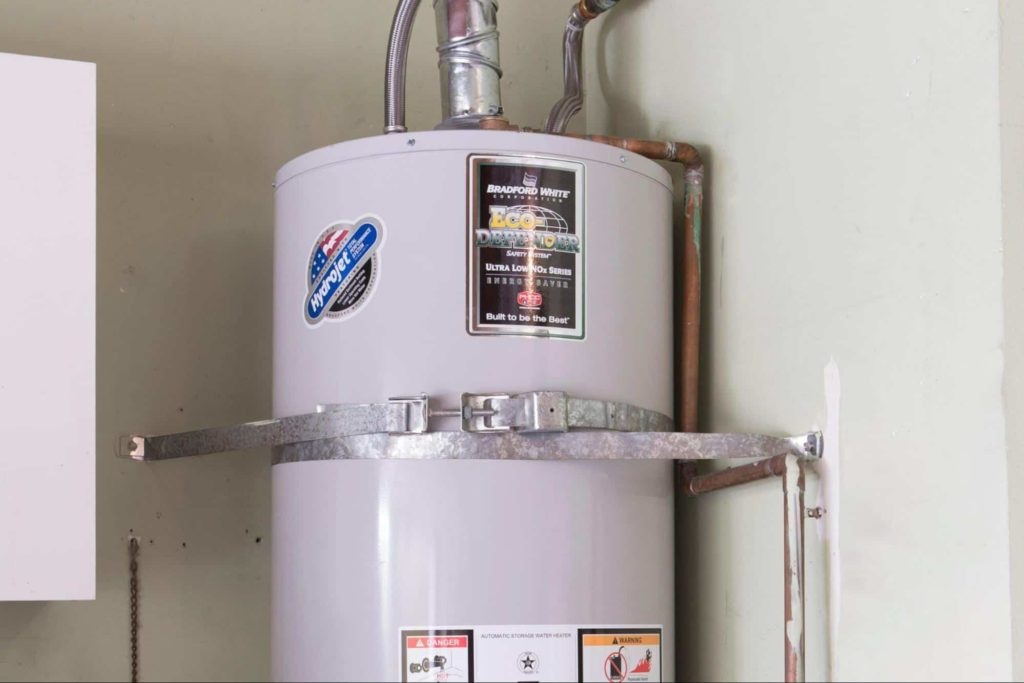
To minimize the chances of water accumulating in the water heater pan and prevent potential water heater-related problems, consider implementing the following preventive measures:
- Regular Maintenance: Schedule annual maintenance for your water heater with the help of a professional technician. Regular maintenance is crucial for ensuring the efficient and safe operation of your water heater.
During the maintenance visit, the technician will do the following:
- Inspect the water heater tank for any signs of leaks, corrosion, or damage.
- Check the TPR valve’s proper functioning and test it for pressure release.
- Examine all plumbing connections and fittings for potential leaks.
- Clean or flush out any sediment buildup in the water heater tank.
- Verify that all components, such as heating elements and thermostats, are working correctly.
- Ensure that the water heater is operating at the recommended temperature.
- Install a Drain Line: Consider connecting a drain line from the water heater pan to a safe location outside your home. A drain line serves as an effective way to prevent water from stagnating in the pan and causing damage to your property.
The drain line should be directed to a location where the water can safely disperse, such as a floor drain or an area with proper drainage.
This simple addition ensures that any water collected in the pan is promptly and safely removed, reducing the risk of water damage to your home.
- Consider a Water Heater Pan Alarm: Installing a water heater pan alarm is an extra layer of protection against potential water heater pan issues. These alarms are designed to detect water accumulation in the pan and trigger an audible alert.
Early detection of water in the pan can help prevent water damage and give you the opportunity to resolve the underlying issue before it worsens.
Water heater pan alarms are especially beneficial if your water heater is located in an area of the house that is not frequently visited or if you want an additional safeguard against water leaks.
When to Seek Professional Help
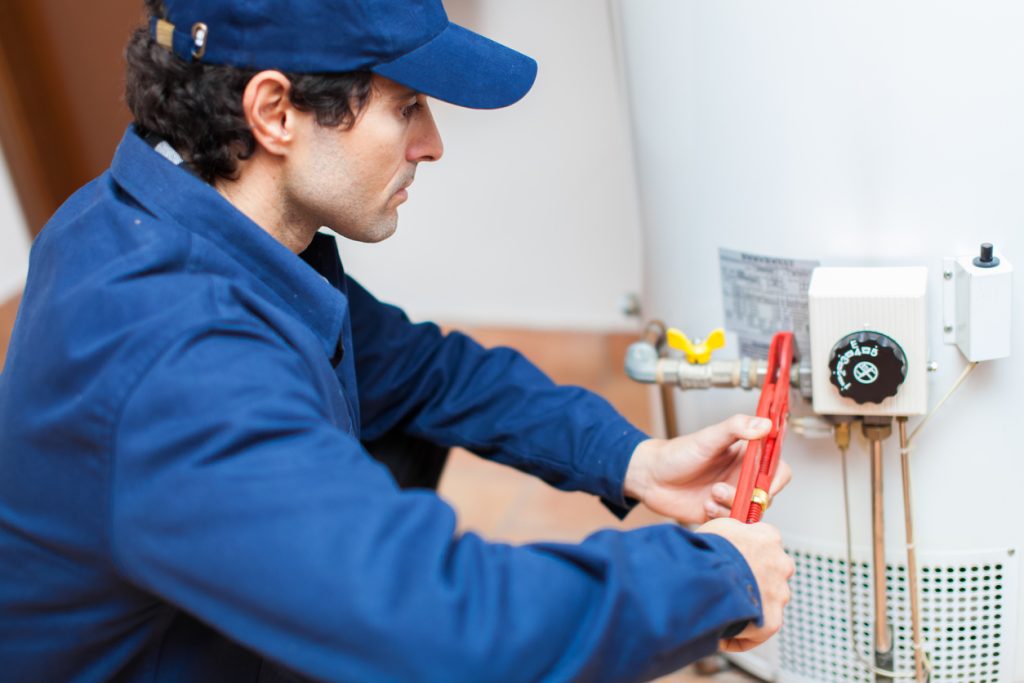
When you are unsure about diagnosing or resolving the water heater pan issue yourself or encounter complex problems, it’s crucial to seek the assistance of a qualified plumber or water heater technician.
Professional help offers the following advantages:
- Expert Diagnosis: Professional plumbers and water heater technicians have the expertise and experience to accurately diagnose the root cause of water in the water heater pan.
They can quickly identify issues that may not be apparent to an untrained eye, such as small leaks or hidden plumbing problems.
By understanding the exact cause of the problem, they can implement the most appropriate and effective solutions.
- Proper Repairs: Attempting to fix water heater issues without the necessary knowledge and skills can lead to ineffective repairs or even worsen the problem.
A qualified professional knows how to perform repairs correctly, ensuring that the issue is resolved in a safe and long-lasting manner.
They have access to the right tools and replacement parts, ensuring that your water heater is repaired with quality materials.
- Safety Assurance: Water heaters involve electricity, gas lines, and pressurized systems, which can be hazardous when not handled properly.
A professional plumber or technician is trained to work with these systems safely, reducing the risk of accidents or injuries during repairs.
They also understand safety protocols and ensure that all safety measures are followed while handling the water heater.
- Preventive Maintenance: In addition to fixing the current issue, professionals can provide preventive maintenance for your water heater.
Regular maintenance helps identify potential problems early on, preventing costly repairs and extending the lifespan of your water heater.
Professionals can also recommend best practices for water heater care, helping you maintain the efficiency and reliability of the unit.
- Warranty Compliance: If your water heater is under warranty, attempting DIY repairs may void the warranty.
Having a qualified professional handle the repairs ensures that the warranty remains valid and protects you from potential future expenses related to the water heater.
- Time and Cost Savings: While DIY repairs may seem cost-effective initially, they can lead to further complications and additional expenses in the long run.
Professional help can save you time, effort, and money by resolving the issue efficiently and preventing future problems.




